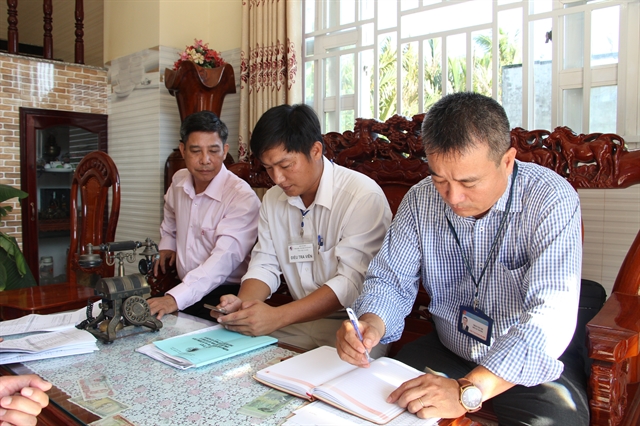 Society
Society

 |
| Deputy Minister of Justice Mai Lương Khôi speaks at the seminar on Monday. — VNS Photo Lê Việt Dũng |
HÀ NỘI — Việt Nam has made remarkable strides in the National Civil Registration and Statistics Action Programme, with simplified procedures, modernised systems and a growing shift toward online registration, according to Deputy Minister of Justice Mai Lương Khôi.
The Deputy Mister was speaking at Monday's seminar to review the 2017-24 Civil Registration and Statistics Action Programme.
He said public awareness about the importance of civil registration has increased, reflected in a higher number of registrations nationwide. The civil registration workforce has also been strengthened and collaboration between central and local agencies has ensured smoother implementation.
However, some challenges remain. Data integration for birth and death registrations on electronic platforms needs improvement and the civil registration workforce requires greater stability.
He outlined several priorities to tackle these issues and prepare for the 2025-30 phase, including updating laws to better support digital transformation, expanding online registration options for more convenience and strengthening coordination between Government agencies and international partners.
Deputy Director of the Civil Status, Citizenship and Notarization Department under the Ministry of Justice, Nhâm Ngọc Hiển underlined several significant milestones in the civil registration efforts which surpass the targets outlined in the programme.
Regarding birth registration, since 2019 Việt Nam had already exceeded its 2024 target of registering 98 per cent of children under five, achieving 98.5 per cent. As of now, over 99 per cent of children under five are registered, with over 90 per cent registered on time.
Meanwhile, the death registration rate, being just over 60 per cent in 2016, has now reached approximately 90 per cent, with timely registration exceeding 72 per cent.
Việt Nam has rolled out a nationwide electronic civil registration and management system. Built by the Ministry of Justice in 2016, it was fully implemented down to the commune level by 2021, providing streamlined and accessible registration services.
The quality of civil registration officials has greatly improved, with 99 per cent of them now meeting professional standards and holding certified qualifications.
However, between 2021 and 2023, the percentage of first-time marriages dropped to 85.5 per cent, while the average age of first-time marriages for men and women has increased, reflecting a trend toward later marriages.
He also highlighted several challenges in civil registration efforts. For example, some localities face limited technology infrastructure and unreliable Internet connections and a portion of the population lacks digital literacy, making online registration difficult.
Several recommendations were made to address these challenges, such as simplifying administrative procedures to make registration more convenient, intensifying public awareness campaigns on digital civil registration, and enhancing the sharing of civil registration data across Government agencies.
Nguyễn Thị Thanh Mai, deputy director of the Population and Labour Statistics Department under the General Statistics Office, highlighted the MoU between the Ministry of Justice, Ministry of Health, and General Statistics Office, laying the groundwork for enhanced data sharing and coordinated activities.
Since its signing, data from the Ministry of Justice has been used by the General Statistics Office for statistical analysis, marking a significant step forward in evidence-based policymaking.
She also mentioned key findings from 2021-23 statistics. On average, 15 per cent of birth registrations across the country were late during 2021-2023. However, this rate varies widely among provinces.
Provinces with challenging geographic or economic conditions, such as Hà Giang, recorded late registration rates as high as 30.9 per cent, while those in the Red River delta sat at the other end of the spectrum.
Certain ethnic groups, like the Sán Dìu, Ngái, and Cống, reported lower rates of late registration, below 10 per cent. Conversely, communities such as the Mông, Lô Lô, and Brâu showed significantly higher rates, exceeding 40 per cent.
Fertility rates among women reflect distinct patterns: Low fertility rates are seen in women aged 15-19. Rates increase sharply, peaking in the 25-29 age group, before gradually declining in higher ages. The average age of first-time mothers in Việt Nam reached 28.6 years in 2023. — VNS




